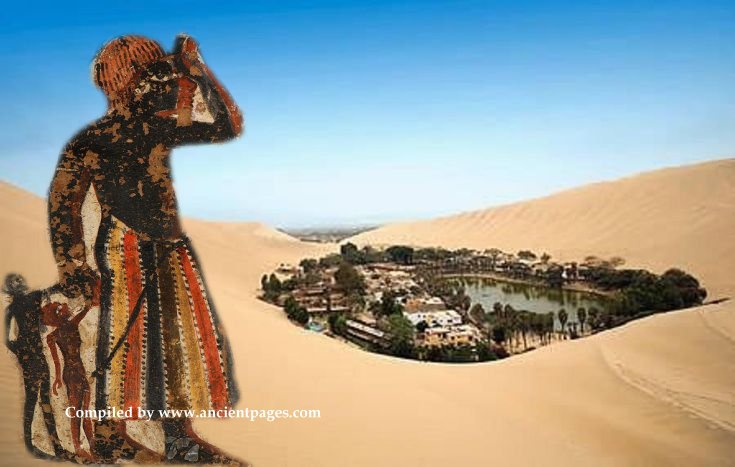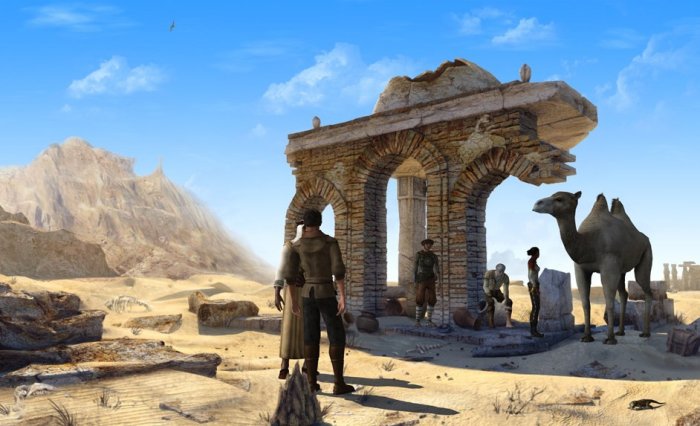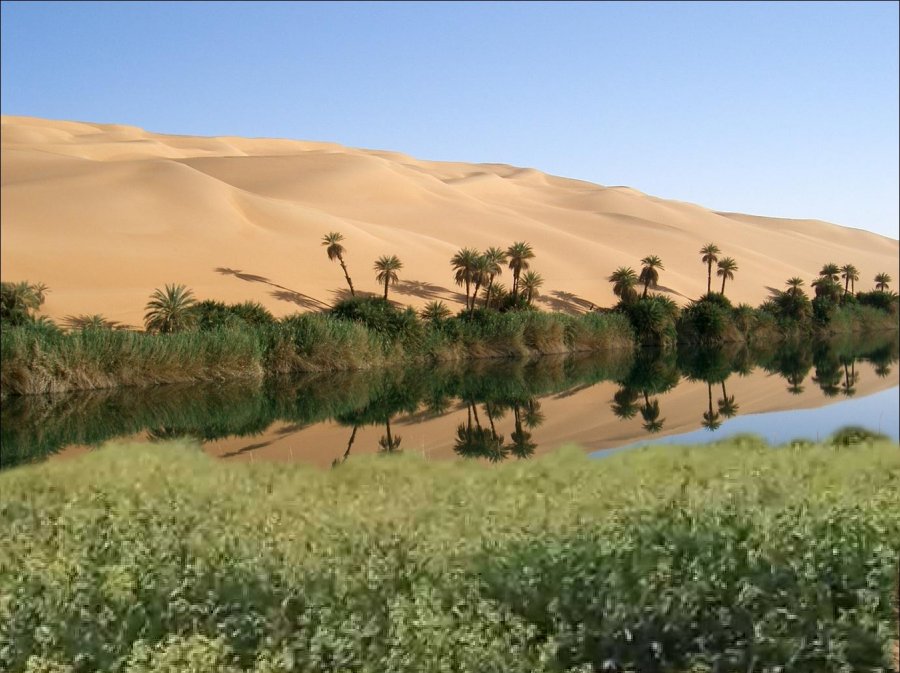Zerzura – Lost Ancient Sahara Oasis Guarded By Black Giants
Ellen Lloyd - AncientPages.com - For as long as anyone can remember, people have been fascinated with the possibility of discovering ancient lost cities. Explorers have gone on the most dangerous expeditions to find fabled riches of lost cities and sometimes they were successful.
Many amazing lost cities have been found underwater, in the desert, and in the jungles, but some mysterious ancient places still remain in the realm of mythology. The fact that we haven’t found them yet doesn’t necessarily imply they do not exist.
There are myths and legends about a lost ancient oasis hidden in the Sahara Desert. Its name is Zerzura, and it's supposed to be located somewhere deep in the desert west of the Nile River in Egypt or Libya.
An anonymous 15th-century Arabic treasure seeker guide, "Kitab al Kdnuz" (The Book of Hidden Pearls), describes Zerzura as a whitewashed city of the desert on whose gate is carved a bird. The treasure seeker is advised to "take with your hand the key in the beak of the bird, then open the door of the city. Enter, and there you will find great riches..."
The lost desert city, which is "white as a dove" and often called "The Oasis of Little Birds", is the resting place of a sleeping King and Queen.
Although some ancient authors say it’s possible to visit Zerzura, old myths say the oasis is guarded by black giants who prevent anyone from entering and leaving this enigmatic place.
Tracing the origin of the Zerzura legend is difficult. Greek historian Herodotus (484 - 425 B.C.) mentions a legendary known as 'The City of Dionysus' that is lost in the desert sands. This could be a reference to Zerzura.
Credit: Screenshot from Lost Chronicles of Zerzura
The first European references to Zerzura are by the English Egyptologist John Gardner Wilkinson in his book "Topography of Thebes and a General View of Egypt" published in 1835. His account was based on a report by an Arab who said he found the oasis while searching for a lost camel, but Wilkinson doesn’t provide a specific location of the lost oasis.
Explorers found many unknown oases mentioned in Wilkinson’s book but didn’t find the legendary Zerzura itself.
Count Ladislas (Lazlo) de Almasy, one of the best pilots in the Hungarian airforce, heard the legend of a fabulous lost oasis of Zerzura. He became determined to find it. In 1932 the Almásy- Patrick Clayton expedition reconnaissance flights discovered two valleys in the Gilf Kebir, a plateau in the New Valley Governorate of the remote southwest corner of Egypt, and southeast Libya.
Almásy discovered the third of the "Zerzura" wadis - rain oases in the remote desert, but despite a systematic search by Almasy, no ruins of any lost city were ever found.
What Changed The Green Sahara Into A Desert?
Zerzura, the legendary lost city filled with treasures and the sleeping king and the queen does still only exists as a mythological place.
Was Zerzura swallowed by the desert? Perhaps Zerzura is much older than we think. There was a time in the distant past when Sahara was green. Scientists have discovered that ancient rivers that existed about 100,000 years ago created green corridors across Sahara.
It’s also possible that Zerzura never existed outside men's imaginations. Currently, we do not know the truth about this fascinating place.
Updated on March 5, 2024
Written by - Ellen Lloyd – AncientPages.com
Copyright © AncientPages.com All rights reserved. This material may not be published, broadcast, rewritten or redistributed in whole or part without the express written permission of AncientPages.com
Expand for referencesMore From Ancient Pages
-
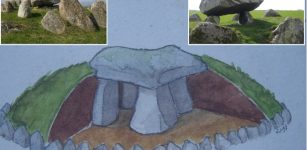 Skegriedösen (Skegrie Dolmen) – 5,000-Year-Old Stone Chamber Tomb In Southern Sweden
Featured Stories | Feb 11, 2023
Skegriedösen (Skegrie Dolmen) – 5,000-Year-Old Stone Chamber Tomb In Southern Sweden
Featured Stories | Feb 11, 2023 -
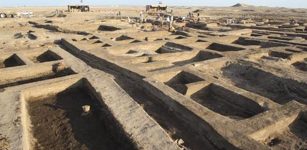 Remains of Santorini Volcanic Eruption Discovered West Of Suez Canal
Archaeology | Jan 3, 2016
Remains of Santorini Volcanic Eruption Discovered West Of Suez Canal
Archaeology | Jan 3, 2016 -
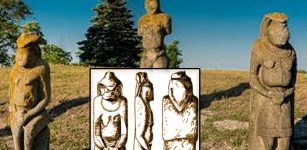 Striking Ancient Stone Idols: The Forgotten Polovtsian Statues Of Eastern Europe
Featured Stories | Mar 8, 2014
Striking Ancient Stone Idols: The Forgotten Polovtsian Statues Of Eastern Europe
Featured Stories | Mar 8, 2014 -
 The Perplexing Story Of The Seven Continents And The Seven Mysterious Races – Distant Past – Part 1
Ancient Mysteries | May 9, 2022
The Perplexing Story Of The Seven Continents And The Seven Mysterious Races – Distant Past – Part 1
Ancient Mysteries | May 9, 2022 -
 On This Day In History: Bolsheviks Executed Aleksandr Kolchak, A Navy Officer And Explorer Of The Arctic – On Feb 7, 1920
News | Feb 7, 2017
On This Day In History: Bolsheviks Executed Aleksandr Kolchak, A Navy Officer And Explorer Of The Arctic – On Feb 7, 1920
News | Feb 7, 2017 -
 Quest For Atlantis Of The Sands – Iram Of The Pillars – A Legendary Lost City
Featured Stories | Aug 7, 2018
Quest For Atlantis Of The Sands – Iram Of The Pillars – A Legendary Lost City
Featured Stories | Aug 7, 2018 -
 Krampus Celebrations Are Becoming Dangerous – Historian Warns
Ancient Traditions And Customs | Dec 10, 2019
Krampus Celebrations Are Becoming Dangerous – Historian Warns
Ancient Traditions And Customs | Dec 10, 2019 -
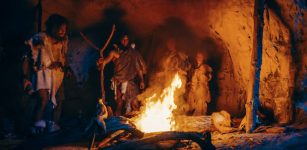 How Human Ancestors Used Fire – New Methods Give Answers
Archaeology | Nov 2, 2022
How Human Ancestors Used Fire – New Methods Give Answers
Archaeology | Nov 2, 2022 -
 Unique Life-Sized Camel Carvings In Northern Arabia Are Much Older Than Previously Thought
Archaeology | Sep 15, 2021
Unique Life-Sized Camel Carvings In Northern Arabia Are Much Older Than Previously Thought
Archaeology | Sep 15, 2021 -
 Underwater Archaeologists Retrieve Over 100 Magnificent Glass Objects at Chengene Skele Bay, Bulgaria
Archaeology | Jul 16, 2024
Underwater Archaeologists Retrieve Over 100 Magnificent Glass Objects at Chengene Skele Bay, Bulgaria
Archaeology | Jul 16, 2024 -
 Why Was Constantinople Called New Rome?
Ancient History Facts | Mar 9, 2020
Why Was Constantinople Called New Rome?
Ancient History Facts | Mar 9, 2020 -
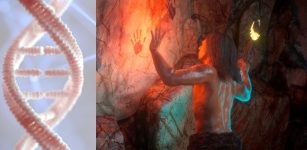 Something Strange Happened To Our Ancestors 900,000 Years Ago – Genetic Study Reveals
DNA | Sep 1, 2023
Something Strange Happened To Our Ancestors 900,000 Years Ago – Genetic Study Reveals
DNA | Sep 1, 2023 -
 God Dagda – A Powerful Leader Of The Tuatha De Danann In Celtic Mythology
Celtic Mythology | May 30, 2020
God Dagda – A Powerful Leader Of The Tuatha De Danann In Celtic Mythology
Celtic Mythology | May 30, 2020 -
 Halloween: Facts And History About All Hallows’ Eve And Its Connection With Samhain – An Ancient Celtic Festival
Ancient Traditions And Customs | Oct 31, 2021
Halloween: Facts And History About All Hallows’ Eve And Its Connection With Samhain – An Ancient Celtic Festival
Ancient Traditions And Customs | Oct 31, 2021 -
 Number Nine: Sacred Symbol In Ancient Cultures
Ancient Symbols | Feb 14, 2017
Number Nine: Sacred Symbol In Ancient Cultures
Ancient Symbols | Feb 14, 2017 -
 Asenath And The Golden Tablet That Changed Her Destiny
Biblical Mysteries | May 10, 2019
Asenath And The Golden Tablet That Changed Her Destiny
Biblical Mysteries | May 10, 2019 -
 Giant Spider Yokai Tsuchigumo Confronts Minamoto No Yorimitsu And Something Strange Happens
Myths & Legends | Mar 23, 2024
Giant Spider Yokai Tsuchigumo Confronts Minamoto No Yorimitsu And Something Strange Happens
Myths & Legends | Mar 23, 2024 -
 Controversial 5,500-Year-Old Sumerian Star Map Of Ancient Nineveh Reveals Observation Of Köfels’ Impact Event
Artifacts | Dec 28, 2018
Controversial 5,500-Year-Old Sumerian Star Map Of Ancient Nineveh Reveals Observation Of Köfels’ Impact Event
Artifacts | Dec 28, 2018 -
 Archaic Temple (Part Of God Poseidon’s Sanctuary) At The Kleidi-Samikon Site In Greece – Unearthed
Archaeology | Jan 12, 2023
Archaic Temple (Part Of God Poseidon’s Sanctuary) At The Kleidi-Samikon Site In Greece – Unearthed
Archaeology | Jan 12, 2023 -
 Will-o’-the-wisp: Eerie Lights Over Swamps And Marshes That Frightened And Led People Astray
Featured Stories | Apr 23, 2020
Will-o’-the-wisp: Eerie Lights Over Swamps And Marshes That Frightened And Led People Astray
Featured Stories | Apr 23, 2020

